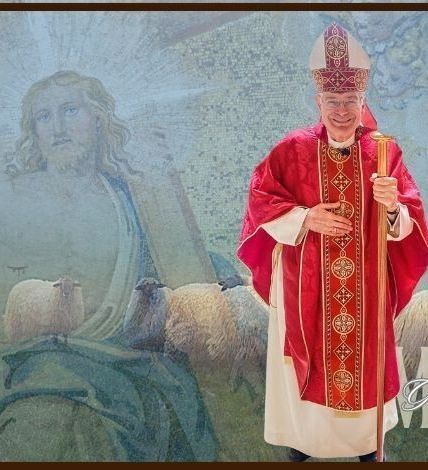
The Science of God’s Creation
Pope Leo XIV determined his name as our new Holy Father following the pontificate of Leo XIII, who served as the Universal Shepherd of the Church from 1878 through 1903. Leo XIII is known for his addressing modern social issues in the face of the Industrial Revolution, establishing the principles of Catholic social teaching, affirming the rights of workers, and challenging both socialism and unrestricted capitalism. Leo XIV has made clear that he intends to follow the new issues facing us today similar to those of the turn of the 20th century, especially in regard to artificial intelligence and the rights of all men and women made in the image and likeness of God.
Most recently, Leo XIV has demonstrated another affinity with his papal namesake in regard to his wonder and awe of the universe. He knows that we, as God creatures, can accomplish so much by marveling at the expanse of the universe and by cooperating with God in discovering more of it. He has demonstrated that faith and science go together. On July 20, the 56th anniversary of the historic Apollo 11 space mission in which the United States became the first nation to land and walk on the moon, Leo XIV visited the Vatican Observatory near Castel Gandolfo. He observed the universe through many of its telescopes. While the Vatican Observatory takes its origin back for many centuries, it was Pope Leo XIII who formally established it on a hillside in Castel Gandolfo behind the dome of St. Peter’s Basilica in 1891 as a visible sign of the Church’s support for scientific research. On July 31 this year, Pope Leo XIV again affirmed its work in the appointment of a new director, Father Richard D’Souza, S.J., to continue its mission.
On his visit to the observatory, Pope Leo XIV made a phone call to the last living member of the Apollo crew, Edwin “Buzz” Aldrin. In their phone conversation, the pope and the astronaut reflected upon Psalm 8. St. Paul VI had given a Latin copy of Psalm 8 to the astronauts for their journey to the moon. He gave them a Latin copy of the Psalm with a handwritten Latin text expressing, “To the glory of God’s name who grants such great power to men, we pray for the success of this wonderful undertaking.” The astronauts took this message with them on their journey and left it, with Psalm 8, on the moon buried next to the American flag. Psalm 8 marvels at the limitless grandeur of God and the smallness of human beings to whom God has graciously granted dignity and power. During the return flight back to earth, Buzz Aldrin read two verses of Psalm 8 expressing, “When I consider the high heavens, the work of thy fingers, the moon, and the stars, which thou has ordained; what is man that thou are mindful of him?” Pope Leo XIV and Buzz Aldrin reflected together on this mystery.
Leo XIV continues to confirm the human mind and heart as primary in coming to understand the reality of God and the world He has created for us. In many of his talks and addresses, the pope has already emphasized how a true personal relationship and encounter with God are key to the understanding of life and experience despite the difficulties we face. While the pope is rightfully challenging us in regard to proper use of artificial intelligence so as not to distract from our humanity, he makes clear that we must, with our minds and hearts, cooperate with science in discovering the world God has given to us. As Father D’Souza, the pope’s new director to the Vatican Observatory, expressed in an interview shortly after his appointment, “The scientific research work of the observatory constantly constitutes as proof that science and faith are perfectly compatible.”
The Apollo 11 visit to the moon certainly brought with it an encounter which went beyond science into the reality of our relationship with God. Our going to the periphery of our existence, of which Pope Francis so frequently spoke, is not only the periphery of the earth, the moon and the universe, but also of God Himself. It is God who created the universe as a gift to us because it is the sign of His marvelous love into which we are individually called.
As Pope Leo XIV continues to call us into this periphery, the silence of the moon, which the Apollo astronauts experienced, is that silence which leads us into God. We do not have to go to the moon to find that silence. We only need to look into ourselves. Just as the moon is a place which reminds us of the grandeur of God, so the depth of our being reminds us of the same. On the occasion of the 56th anniversary of the lunar landing, we do so with a great appreciation for what God’s creation has accomplished in the human spirit. We also do so knowing there are many more peripheries to be encountered and always the depth of God to be lived. The Church’s mission is to proclaim the Gospel of Jesus Christ, and that Gospel includes the science of God’s creation around us and within us.
Most Revered Gerald M. Barbarito

